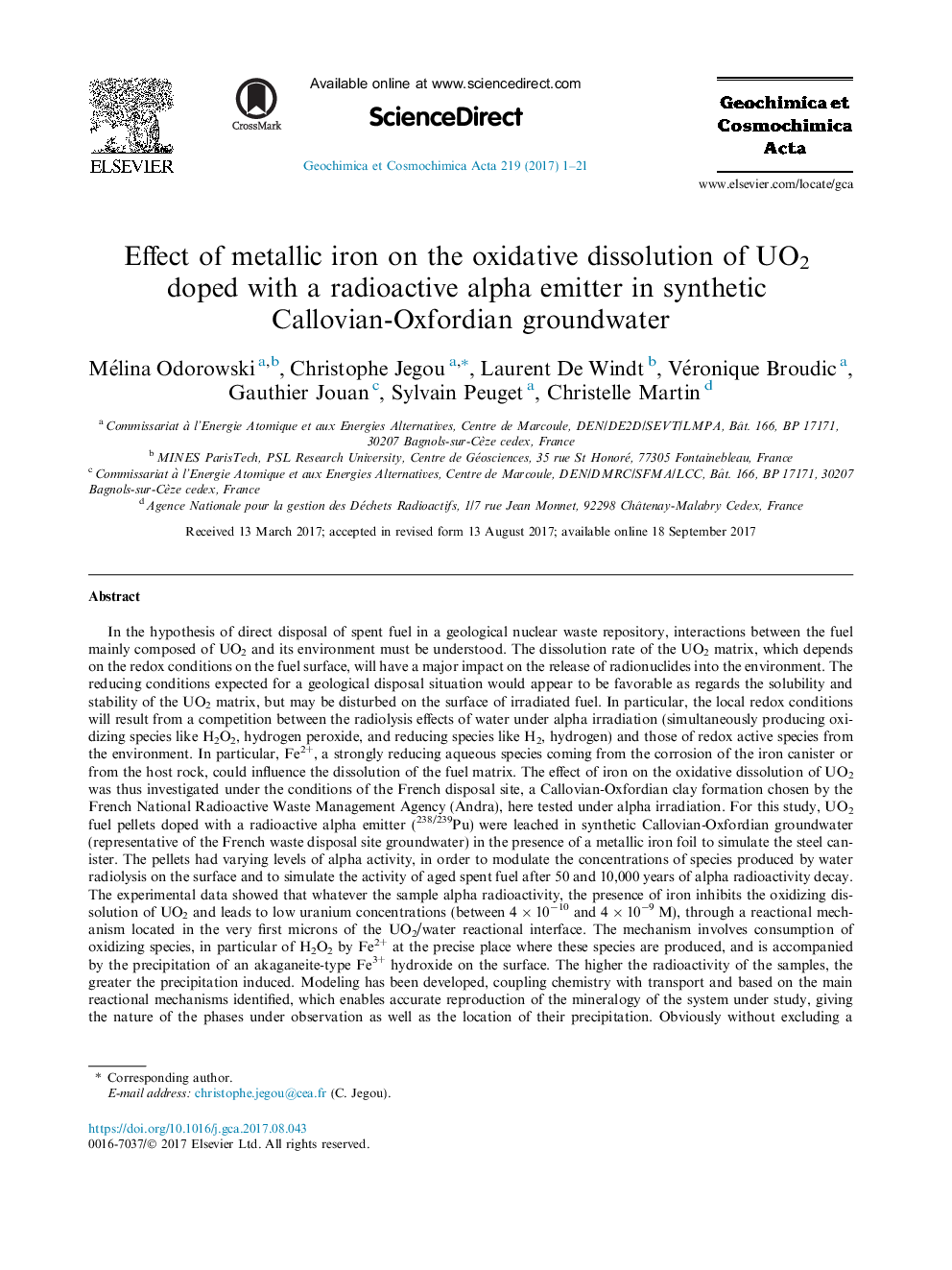| کد مقاله | کد نشریه | سال انتشار | مقاله انگلیسی | نسخه تمام متن |
|---|---|---|---|---|
| 5783258 | 1637938 | 2017 | 21 صفحه PDF | دانلود رایگان |

In the hypothesis of direct disposal of spent fuel in a geological nuclear waste repository, interactions between the fuel mainly composed of UO2 and its environment must be understood. The dissolution rate of the UO2 matrix, which depends on the redox conditions on the fuel surface, will have a major impact on the release of radionuclides into the environment. The reducing conditions expected for a geological disposal situation would appear to be favorable as regards the solubility and stability of the UO2 matrix, but may be disturbed on the surface of irradiated fuel. In particular, the local redox conditions will result from a competition between the radiolysis effects of water under alpha irradiation (simultaneously producing oxidizing species like H2O2, hydrogen peroxide, and reducing species like H2, hydrogen) and those of redox active species from the environment. In particular, Fe2+, a strongly reducing aqueous species coming from the corrosion of the iron canister or from the host rock, could influence the dissolution of the fuel matrix. The effect of iron on the oxidative dissolution of UO2 was thus investigated under the conditions of the French disposal site, a Callovian-Oxfordian clay formation chosen by the French National Radioactive Waste Management Agency (Andra), here tested under alpha irradiation. For this study, UO2 fuel pellets doped with a radioactive alpha emitter (238/239Pu) were leached in synthetic Callovian-Oxfordian groundwater (representative of the French waste disposal site groundwater) in the presence of a metallic iron foil to simulate the steel canister. The pellets had varying levels of alpha activity, in order to modulate the concentrations of species produced by water radiolysis on the surface and to simulate the activity of aged spent fuel after 50 and 10,000Â years of alpha radioactivity decay. The experimental data showed that whatever the sample alpha radioactivity, the presence of iron inhibits the oxidizing dissolution of UO2 and leads to low uranium concentrations (between 4Â ÃÂ 10â10 and 4Â ÃÂ 10â9Â M), through a reactional mechanism located in the very first microns of the UO2/water reactional interface. The mechanism involves consumption of oxidizing species, in particular of H2O2 by Fe2+ at the precise place where these species are produced, and is accompanied by the precipitation of an akaganeite-type Fe3+ hydroxide on the surface. The higher the radioactivity of the samples, the greater the precipitation induced. Modeling has been developed, coupling chemistry with transport and based on the main reactional mechanisms identified, which enables accurate reproduction of the mineralogy of the system under study, giving the nature of the phases under observation as well as the location of their precipitation. Obviously without excluding a potential contribution from the hydrogen produced by the anoxic corrosion of the iron foil, this study has shown that iron plays a major role in this oxidizing dissolution inhibition process for the system investigated (localized alpha radiolysis). This inhibitor effect associated with iron is therefore strongly dependent on the location of the redox front, which is found on the surface in the case of alpha irradiation UO2/water reactional interface.
Journal: Geochimica et Cosmochimica Acta - Volume 219, 15 December 2017, Pages 1-21